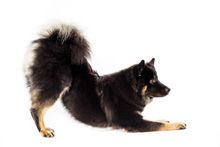Stretch your skills to earn more in veterinary practice

If you turn your eye to areas around your practice, you may see gaps where you could offer more services to boost the care you offer for pets and people. Owning these areas-and creating new profit centers within your practice-is a great way to position yourself for promotions and raises. And yes, this works for every member of the veterinary team-from kennel attendant, receptionist, technician and practice manager to associate veterinarian. Here are examples of areas in my practice and how we grew them into new profit centers.
Case 1: OFA Radiographs
After splitting with our sister clinic in 1998, where registration radiographs for the Orthopedic Foundation for Animals were commonplace, our practice went several years without doing many. From 1999 to 2004, our practice took OFA radiographs for a total of 10 patients, generating a combined $913. While there were some circumstances that helped suppress our ability to perform the service, the fact is, no one in our practice was really interested.
In 2007, I took the Oregon Radiation Safety course and started taking more radiographs. Then our practice crossed paths with a labradoodle breeder who wanted some registration films. I decided we should start trying to increase our ability to provide the service-and increase practice revenue. We also had a new digital system that made repetitive x-rays to achieve perfection more palatable. The client was happy and continued to bring her dogs to our practice, insisting I take her films. Over time our demand grew, and the geographical area we were attracting clients from was huge. It turns out that labradoodle breeders talk. A lot. Many of them also want their films sent to a specialist in the Midwest before OFA submission and ask us to perform other services, such as microchip administration and thyroid panel submission. Our production has increased dramatically, which has offered me a strong position to negotiate my salary.

In 2013, we topped $10,000 in gross revenue.
*Not including ancillary services performed along with OFA since 2010, such asveterinary exams when needed, microchip implanting and thyroid testing
Case 2: Dental care
In 2009 I attended a regional CE meeting, keeping the idea of how to change our approach to small animal dentistry in mind. After taking days of lectures and looking at how we were performing dentistry, I asked for a budget to purchase a new scaler/polisher/high-speed drill unit, a dental radiograph machine, a digital dental sensor and software and a computer. I spent just under $15,000-a few things were on sale-and bought everything on the list.
According to my business plan, which I laid out for the owner in advance, we set a goal to get permission to do digital dental radiographs on at least 50 percent of dental patients in the first year. We hit 66 percent. By year two, I set a goal for 70 percent. We hit 73 percent. After year three, we hit a plateau of about 80 percent, which has stayed firm to this day.

*Numbers do not include revenue from IV catheters, preanesthetic lab work, anesthesia, vaccinations or medications.
Ways to grow
Looking for other areas to grow? Consider taking ownership of areas such as nutrition counseling, bereavement counseling and weight loss counseling at your practice.
I participate in 95 percent of our dentistry, continue to attend CE on dentistry and have sought training in advanced cases, should we ever move in that direction.
While the numbers show how the changes in our approach to dentistry have helped the bottom line, what they fail to show is even more important. It's difficult to assess, but many, many teeth would go without treatment if not for dental radiographs. No question our increase in gross revenue is due partly to being able to see what's going on below the gum line. Efficiency is also a factor. While gigly wire or a dinosaur cutting handpiece were the former options for extraction, the use of newer tools and strategies make extraction seamless and less time consuming. A common estimate in our practice is that it took us twice as long to generate half the extraction revenue before upgrading our equipment.
Client satisfaction is also immeasurable with the use of dental radiographs. We no longer have to face clients who doubt the need to have a tooth extracted. Now it's right there in black and white.
Kyle Palmer, CVT, is a Firstline Editorial Advisory Board member and a practice manager at Silver Creek Animal Clinic in Silverton, Oregon. Have you taken a step to grow in your job? Tell us about it! Send your questions or comments to firstline@advanstar.com.